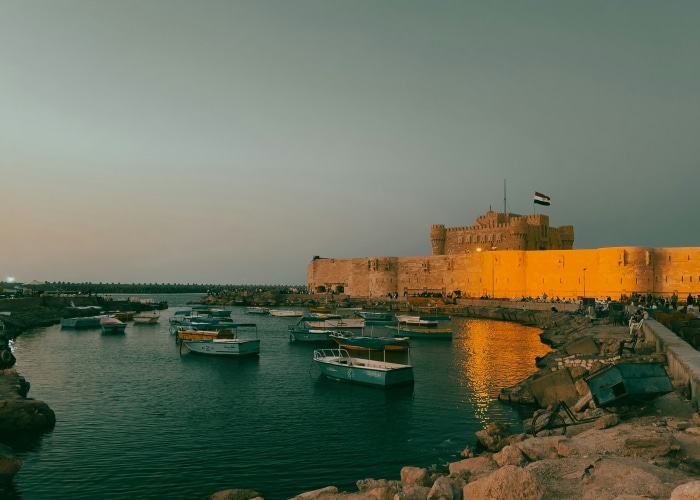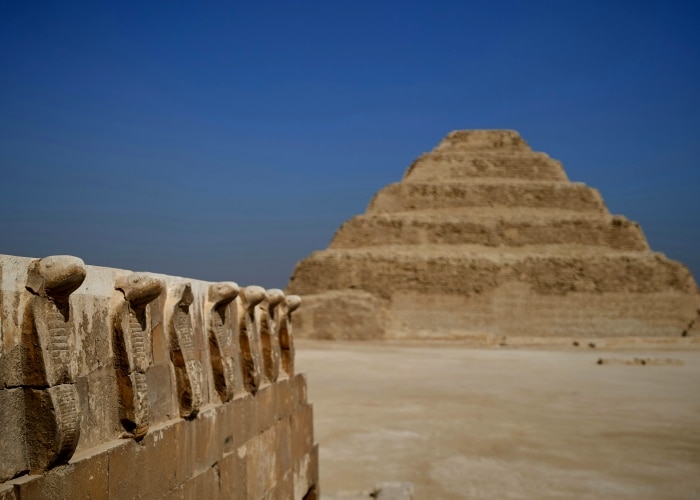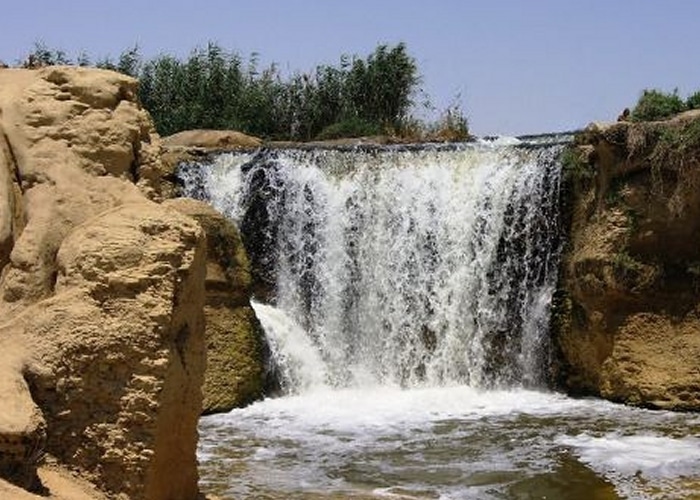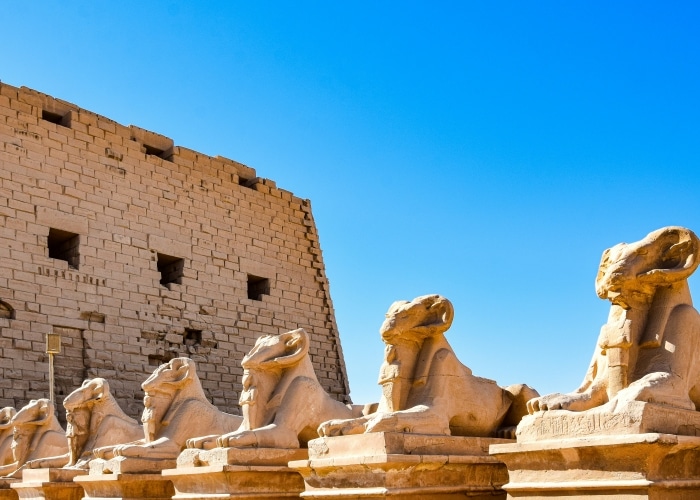In Egypt, every journey weaves together desert, river, and sea. The Pyramids of Khufu, Khafre, and Menkaure still rise against the winds of the Giza Plateau, while the Valley of the Kings keeps its tombs carved into the rock, cool and silent. History seems to layer itself over every landscape.
Along the banks of the Nile, feluccas drift slowly past villages with ochre façades. Luxor and Aswan reveal temples where the morning light brings out carvings etched thousands of years ago. Each stop adds another piece to an immense story.
Further east, the Red Sea stretches out with bright beaches in Hurghada, Sharm el-Sheikh, and Safaga. Beneath the surface, coral reefs burst with colorful fish. Between sailing, diving, and walks on the sand, Egypt moves between ancient grandeur and the calming beauty of the sea.
Top 5 Guided Tours
Places to Visit
Key Facts

The legendary site of Giza lies just seven kilometers from the Egyptian capital. This is where the majestic Pyramids of Menkaure, Khufu, and Khafre stand tall.
These iconic monuments are unmissable, and best experienced with the insight of a tour guide in Egypt. Don’t miss the brand-new Grand Egyptian Museum, inaugurated in the summer of 2021, whose crown jewel is the tomb of Tutankhamun.
The rest of the city is well worth exploring, starting with the Coptic Quarter, the oldest part of Cairo. Near the Citadel of Saladin, you can wander the narrow alleys of the Fatimid Quarter, which lead directly to the bustling Khan Al-Khalili souk. And to escape the heat or simply enjoy some fresh air, head to the Al-Azhar Gardens and stroll among lawns, bougainvillea, acacias, and mango trees.

Alexandria, Egypt’s most forward-looking city, blends tradition with modernity.
Here are a few highlights not to miss:
– The Bibliotheca Alexandrina: a futuristic-looking cultural hub inaugurated in 2002. It houses millions of books, along with museums, temporary exhibitions, and year-round cultural activities.
– The Corniche: stretching from Silsila Point past the Ras el-Tin Palace to the Fort of Qaitbay. This 15-kilometer promenade is lined with elegant buildings, terraces, and restaurants. At its far end stands the Maritime Museum, built on the site where the legendary Lighthouse of Alexandria once stood before being destroyed by an earthquake in 1303. Go early one morning to watch the fishermen return at the Anfushi fish market.
– History enthusiasts can explore the Roman amphitheater or the Greco-Roman necropolis of Kom El Shoqafa.
The city also invites you to slow down and enjoy its beaches, such as El-Mandara and Al-Mamurah.

The necropolis of Saqqara is the oldest in all of Egypt. It holds the tombs of some of the earliest pharaohs, as well as the country’s oldest monument, the Step Pyramid of Djoser. Standing 66 meters high, it was reopened in 2020 after 14 years of restoration.
Nearby lies the smaller Pyramid of Unas, along with several mastabas (rectangular tombs). The mastaba of Mereruka contains 30 chambers and is richly decorated inside. You can also explore the Imhotep Museum, named after the renowned scholar and architect who masterminded the complex 4,000 years ago. The museum houses a remarkable collection of artifacts from that era.

Leaving from Cairo, you’ll need to drive about 130 kilometers to reach the valley. This wadi is famous because at Wadi El-Hitan, archaeological digs uncovered whale fossils dating back tens of millions of years. The Fayoum Oasis lies just nearby.
Excursions abound around Magic Lake and Lake Qaroun, linked by the small Wadi El Rayan waterfall. The surrounding dunes offer stunning views, and thrill-seekers can enjoy sandboarding down the slopes. You can also take a boat ride across the waters, watching fishermen at work or spotting the many species of migratory birds that arrive from autumn onwards.
The region is also renowned for its Greco-Roman heritage, with landmarks such as the Pyramid of Meidum and a site featuring 200 ancient watermills built along the canals, some of which are still in use today.

The city of Luxor is located on the banks of the Nile and stands as one of the great centers of the pharaohs’ ancient world. Its origins date back to the reign of Amenhotep III in the 14th century BC, with further additions made by Ramses II.
At the heart of the city lies the open-air Temple of Luxor, known as the Temple of Amun. It holds remarkably well-preserved statues and carved reliefs, along with a pink granite obelisk. Originally, there were two—its twin now stands on Place de la Concorde in Paris.
From here begins a dromos, an avenue linking two monumental sites. It stretches three kilometers and leads to the Karnak complex. Once lined with 700 sphinxes, only a few remain at the start and end today. Inside the temple, large standing and seated statues surround 134 columns adorned with hieroglyphs.
Another unmissable site in the region is the Valley of the Kings, facing Luxor on the west bank of the Nile. Hidden within the mountains are the tombs and mortuary chambers of illustrious nobles of antiquity. Among them are the resting places of pharaohs Ramses II, Akhenaten, Amenhotep III, and Tutankhamun.
Close by lies the Valley of the Queens, where the mummies of royal wives were laid to rest. The galleries in both valleys are exceptionally well preserved, and the colorful painted walls are of rare beauty.
Cairo
Arabic
1,010,408 km²
July 23
102 million
Egyptian Pound (EGP)
EET (UTC+2)
Desert
+20
220 V, Type C & F